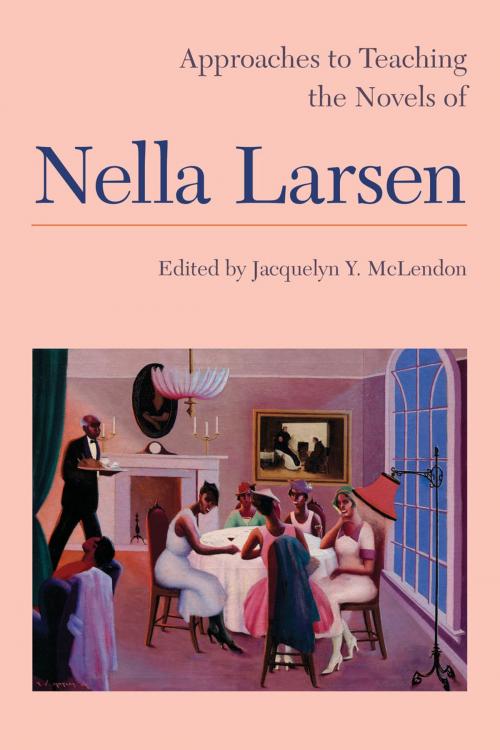Approaches to Teaching the Novels of Nella Larsen
Fiction & Literature, Literary Theory & Criticism, Black, Nonfiction, Reference & Language, Language Arts, Study & Teaching, American| Author: | ISBN: | 9781603292214 | |
| Publisher: | The Modern Language Association of America | Publication: | September 1, 2016 |
| Imprint: | The Modern Language Association of America | Language: | English |
| Author: | |
| ISBN: | 9781603292214 |
| Publisher: | The Modern Language Association of America |
| Publication: | September 1, 2016 |
| Imprint: | The Modern Language Association of America |
| Language: | English |
Nella Larsen's novels Quicksand and Passing, published at the height of the Harlem Renaissance, fell out of print and were thus little known for many years. Now widely available and taught, Quicksand and Passing challenge conventional "tragic mulatta" and "passing" narratives. In part 1, "Materials," of Approaches to Teaching the Novels of Nella Larsen, the editor surveys the canon of Larsen's writing, evaluates editions of her works, recommends secondary readings, and compiles a list of useful multimedia resources for teaching.
The essays in part 2, "Approaches," aim to help students better understand attitudes toward women and race during the Harlem Renaissance, the novels' relations to other artistic movements, and legal debates over racial identities in the early twentieth century. In so doing, contributors demonstrate how new and seasoned instructors alike might use Larsen's novels to explore a wide range of topics--including Larsen's short stories and letters, the relation between her writings and her biography, and the novels' discussion of gender and sexuality.
Nella Larsen's novels Quicksand and Passing, published at the height of the Harlem Renaissance, fell out of print and were thus little known for many years. Now widely available and taught, Quicksand and Passing challenge conventional "tragic mulatta" and "passing" narratives. In part 1, "Materials," of Approaches to Teaching the Novels of Nella Larsen, the editor surveys the canon of Larsen's writing, evaluates editions of her works, recommends secondary readings, and compiles a list of useful multimedia resources for teaching.
The essays in part 2, "Approaches," aim to help students better understand attitudes toward women and race during the Harlem Renaissance, the novels' relations to other artistic movements, and legal debates over racial identities in the early twentieth century. In so doing, contributors demonstrate how new and seasoned instructors alike might use Larsen's novels to explore a wide range of topics--including Larsen's short stories and letters, the relation between her writings and her biography, and the novels' discussion of gender and sexuality.















